Subfamily Alosinae Phylum Chordata | Genus Tenualosa Higher classification Tenualosa Rank Species | |
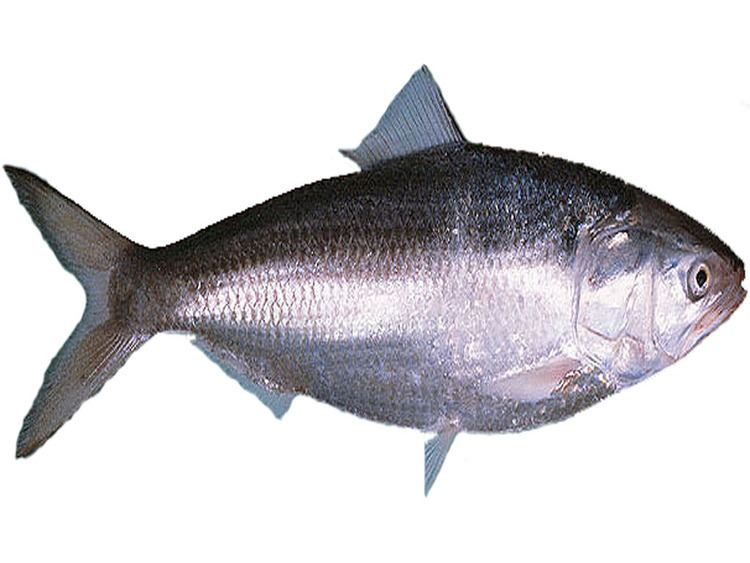 | ||
Similar Rohu, Catla catla, Tenualosa, Shads, Indian mackerel | ||
Live hilsa fish catching in river not easy to catch live pulasa fish ilisha fishes survival food
Tenualosa ilisha (ilish, hilsa, hilsa herring or hilsa shad) is a species of fish in the herring family (Clupeidae), and a popular food fish in South Asia. The fish contributes about 12% of the total fish production and about 1% of GDP in Bangladesh. About 450,000 people are directly involved with the catching for livelihood; around four to five million people are indirectly involved with the trade. It is also the national fish of Bangladesh.
Contents
- Live hilsa fish catching in river not easy to catch live pulasa fish ilisha fishes survival food
- Ilisha fish cutting hilsa fishs slices indian shad ilisha famous fish cutting ilish machhi cut
- Common names
- Description and habitat
- Food value
- Ilish in culture
- Ilish production
- Overfishing and possible extinction
- References
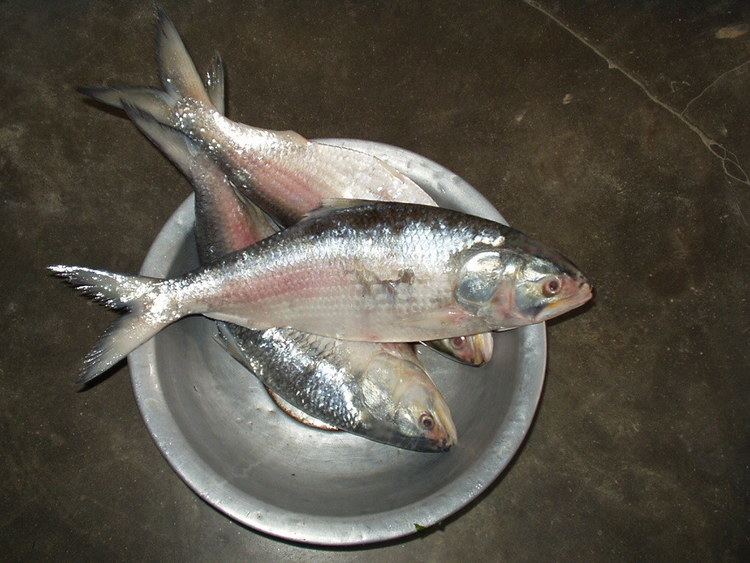
Ilisha fish cutting hilsa fishs slices indian shad ilisha famous fish cutting ilish machhi cut
Common names
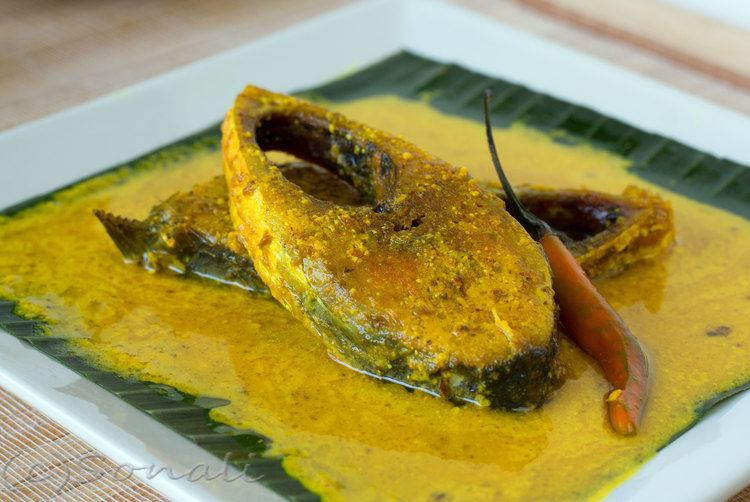
Other names include: ilish, ellis, palla fish, hilsha etc. Bengali: ইলিশ: ilish, Gujarati: મોદાર/પાલ્વા: Modar or Palva, Odia: ଇଲିଶି , Sindhī: پلو مڇي pallu machhi, Telugu: పులస: pulasa or polasa : Tamil - 'Ullam'. The ilish word is also used in India's Assamese, Bengali-, Odia- and Telugu-speaking regions and in Pakistan's Sindh province. In Iraq it is Called Sboor صبور. In Malaysia and Indonesia, it is commonly known as terubuk. Due to its unique features of oily and tender, some Malays call it 'terubuk UMNO'.
Description and habitat
The fish is marine; freshwater; brackish; pelagic-neritic; anadromous; depth range ? - 200 m. Within a tropical range; 34°N - 5°N, 42°E - 97°E in marine and freshwater. It can grow up to 60 cm in length with weights of up to 3 kg. It is found in rivers and estuaries in Bangladesh, India, Pakistan, Burma and the Persian Gulf area where it can be found in the Tigris and Euphrates rivers in and around Iran and Iraq. It has no dorsal spines but 18 – 21 dorsal soft rays and anal soft rays. The belly has 30 to 33 scutes. There is a distinct median notch in upper jaw. Gill rakers fine and numerous, about 100 to 250 on lower part of arch and the fins are hyaline. The fish shows a dark blotch behind gill opening, followed by a series of small spots along the flank in juveniles. Color in life, silver shot with gold and purple. The species filter feeds on plankton and by grubbing muddy bottoms. The fish schools in coastal waters and ascends up the rivers (anadromous) for around 50 – 100 km to spawn during the South West monsoons (June to September) and also in January to April . April is the most fertile month for breeding of ilish. The young fish returning to the sea are known in Bangladesh as jatka, which includes any ilish fish up to 9 inches long.
Food value
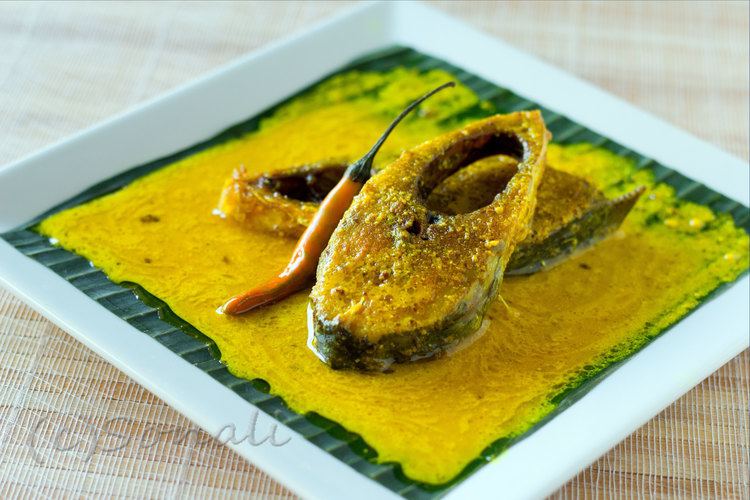
The fish is popular food amongst the people of South Asia and in the Middle East, but especially with Bengalis. It is the national fish of Bangladesh. Bengali fish curry is a popular dish made with mustard oil or seed. It is also popular in India, especially West Bengal, Odisha, Tripura, Assam, Andhra Pradesh and Southern Gujarat and in Mizoram and it is also exported globally.
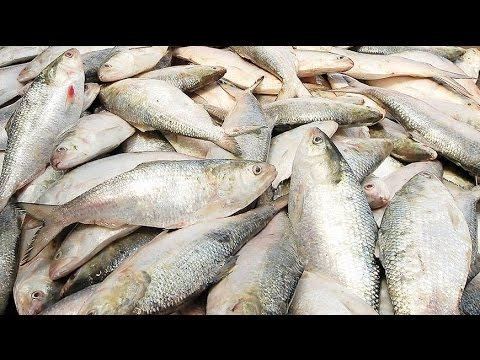
In North America (where ilish is not always readily available) other shad fish are sometimes used as an ilish substitute, especially in Bengali cuisine. This typically occurs near the East coast of North America, where fresh shad fish having similar taste can be found.
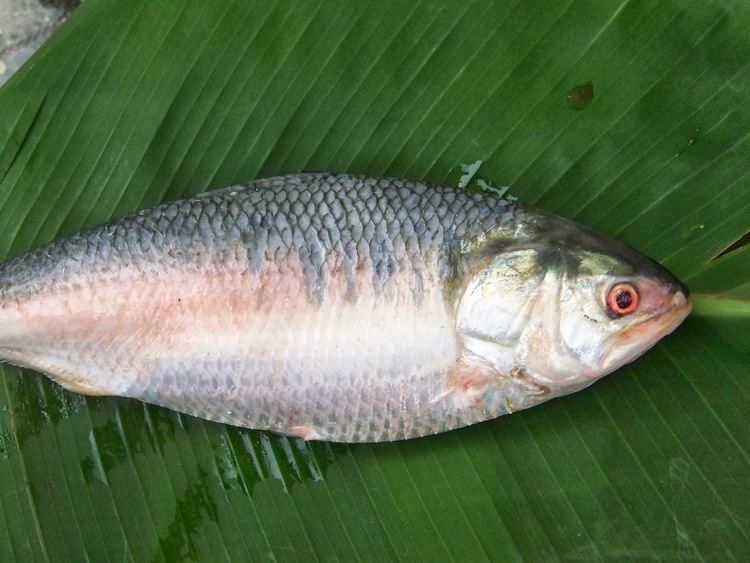
In Bangladesh, fish are caught in the Padma-Meghna-Jamuna delta, which flows into the Bay of Bengal and Meghna (lower Brahmaputra), and Jamuna rivers. In India, the Rupnarayan (which has the Kolaghater Ilish), Ganges, Mahanadi, Chilka Lake, Narmada and Godavari rivers are also famous. In Pakistan, fish are caught in the Indus River. They are also caught in the sea, but some consider the marine stage of the fish as not so tasty. The fish has very sharp and tough bones, making it problematic to eat for some.
Ilish is an oily fish rich in omega 3 fatty acids. Recent experiments have shown its beneficial effects in decreasing cholesterol level in rats and insulin level.
In Bengal, ilish can be smoked, fried, steamed, baked in young plantain leaves, prepared with mustard seed paste, curd, begun (eggplant), different condiments like jira(cumin) and so on. It is said that people can cook ilish in more than 50 ways. Ilish roe is also popular as a side dish. Ilish can be cooked in very little oil since the fish itself is very oily.
Ilish in culture
Ilish production
Five types of ilish can be found worldwide. Yearly ilish caught are 5,000,000 ton. Among them, 50%-60% are caught by Bangladesh, 15%-20% are caught by India, Pakistan and rest 5%-10% are caught by Malaysia, Thailand, China, Vietnam and Sri Lanka.
Overfishing and possible extinction
The species is overfished now. It is becoming rare to land 3 or 2 kg specimens. There has been a consequent price increases and collapsing populations. In the past ilish were not harvested between Vijaya Dashami and Saraswati Puja due to some informal customs of Bengali Hindus as it is the time when the juvenile fish born upstream make their way to the sea during that period. But as disposable incomes grew, wealthier consumers abandoned the old traditions. The paradox is that increasing prices have led to even more over fishing. The advent of finer fishing nets and advanced trawling techniques, and environmental degradation of the rivers, has worsened the situation. Fishermen have been ignoring calls to at least leave the juvenile "jatka" alone to repopulate the species. The fishing of the young jatka is now illegal in many countries. It is thought that some 83,000 seasonal fishermen are employed in catching them and traders are bidding up the price of the fish to exorbitant levels. Furthermore, the changes brought about by global warming have led to a gradual depletion of the ilish's breeding grounds, reducing populations further. The fish is heading towards extinction in certain regions.
